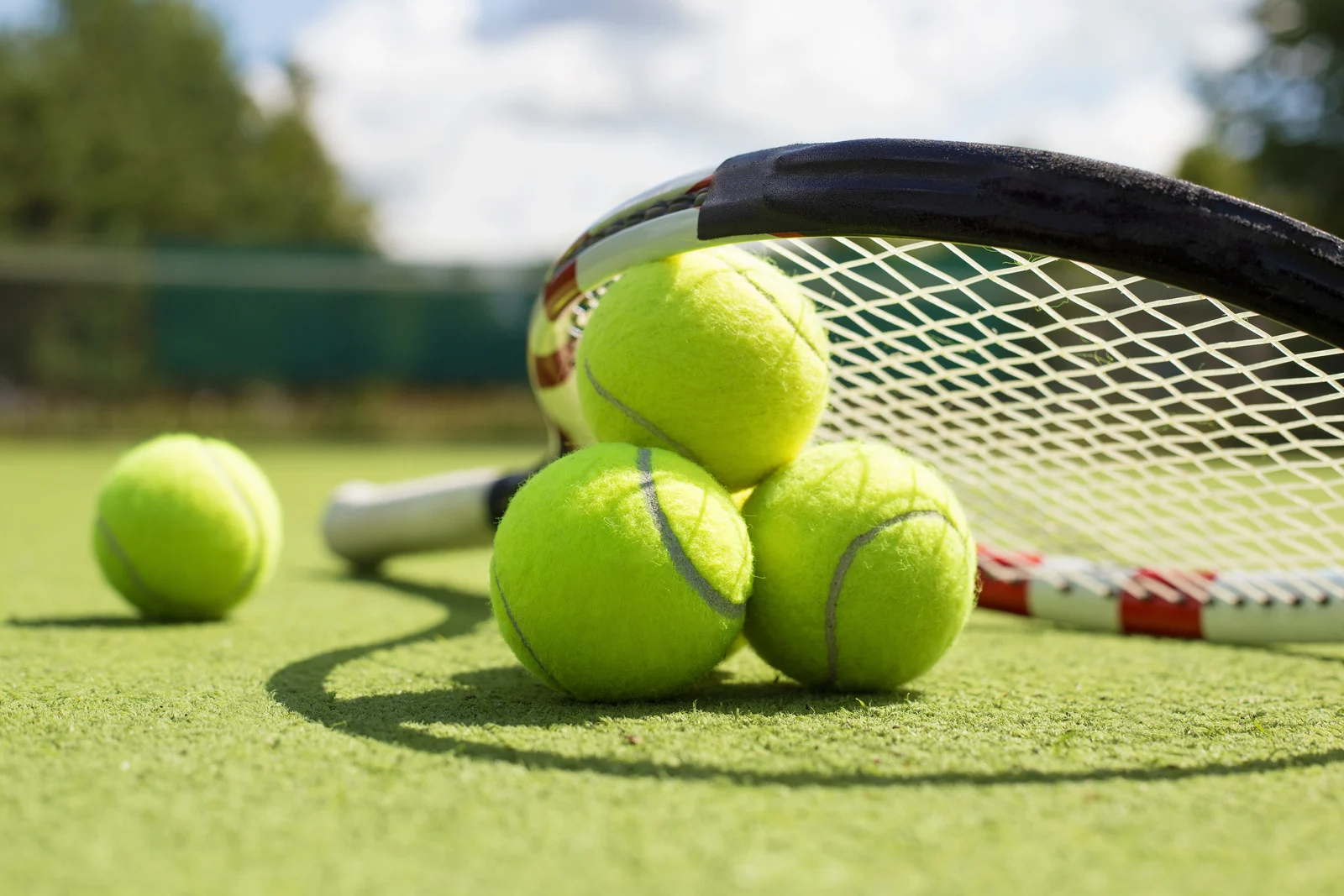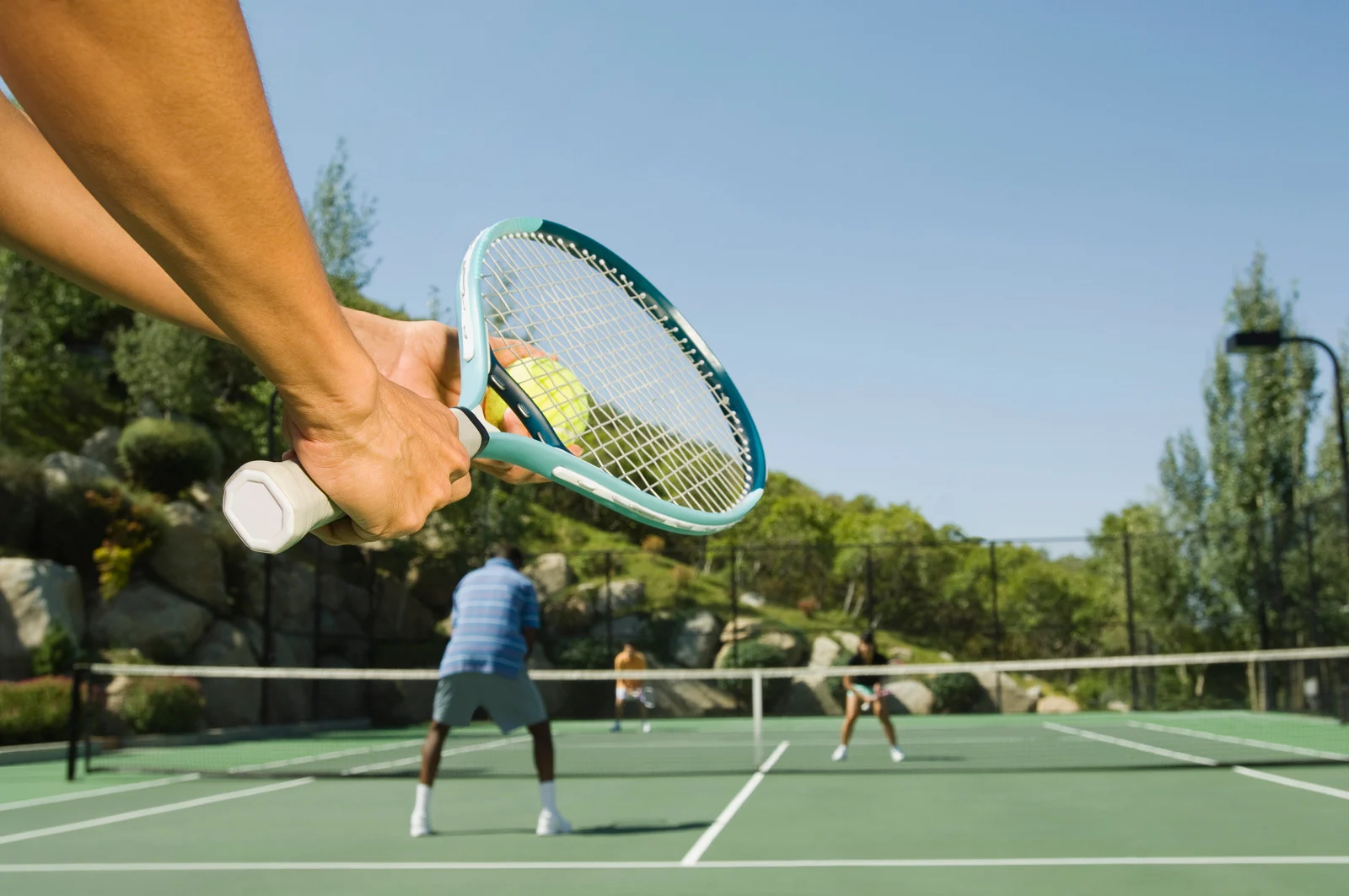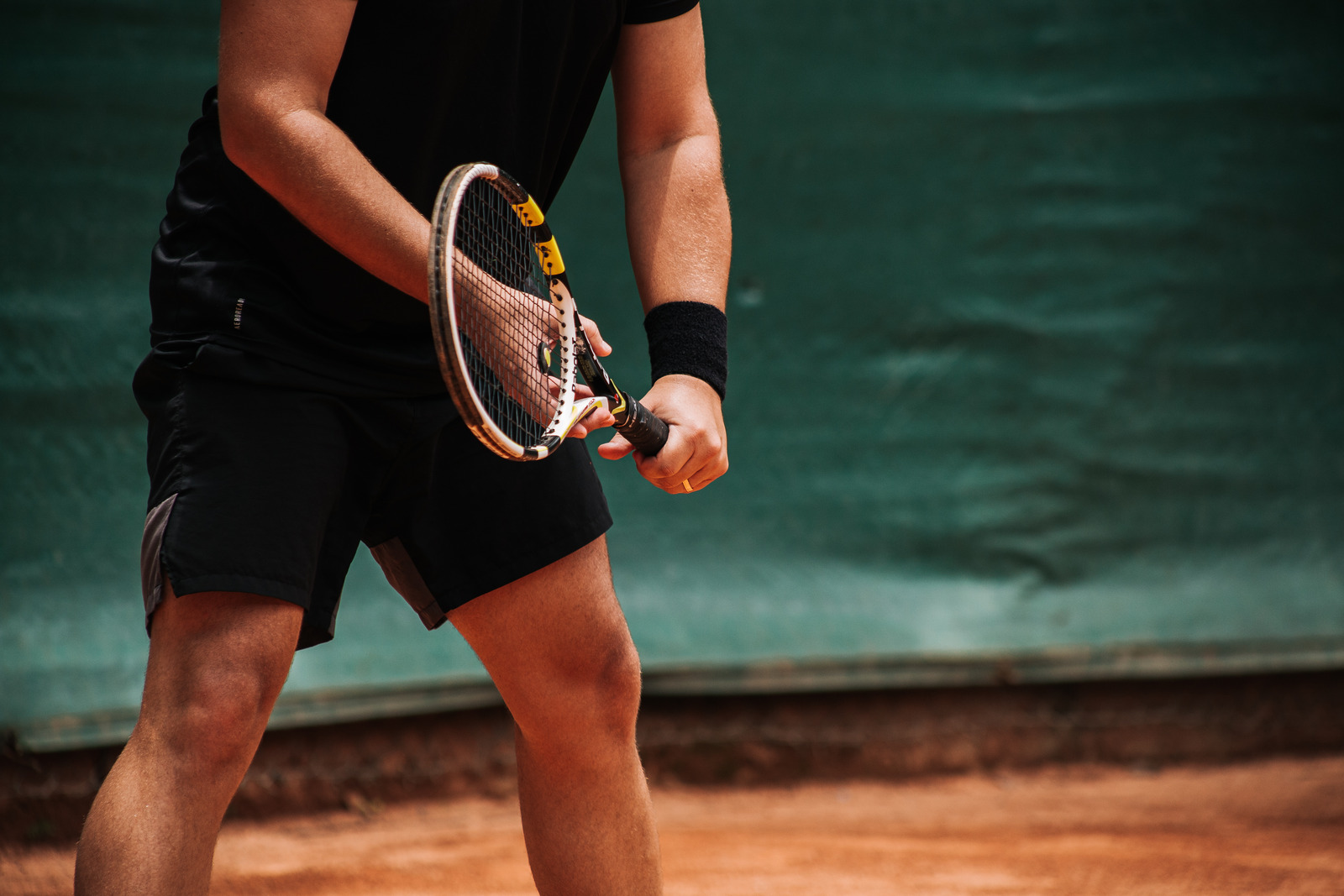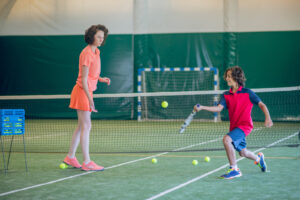Holding a Tennis Racket
Holding a tennis racket for beginners can be a bit confusing at first, but with a little practice and guidance, it can become second nature. The first thing to consider is how to properly grip the racket. Most players use their dominant hand to hold the racket, but this can vary depending on personal preference. One common grip is the Eastern grip, where the base knuckle of the index finger is placed on the third bevel of the handle. Another popular grip is the semi-Western grip, where the base knuckle of the index finger is placed on the second bevel of the handle.
For beginners, it is advisable to use the continental grip, where the base knuckle of the index finger is placed on the top bevel of the handle. This grip allows for easier maneuverability and control over the racket. It is important to note that the grip should be firm but not too tight, as this can hinder the player’s ability to generate power and control the ball.
Once the grip is established, beginners should focus on holding the racket towards the upper end of the grip, closer to the head of the racket. This allows for better control and maneuverability during shots. Practice is key when it comes to mastering the way to hold a tennis racket, so beginners should take the time to familiarize themselves with the grip and experiment with different positions on the handle. Mastering the correct way to hold the racket will enable players to execute powerful and accurate shots, ultimately leading to better overall gameplay.
Choosing the Right Tennis Racket
Are you playing tennis with the right racket? It’s essential to have one that allows you to swing freely and comfortably. Look at the weight, balance, swing weight and stiffness of your racket. These features will let you know if it’s a great fit for your style of play. If it is, it might feel effortless when you hit the ball! On the other hand, an unsuitable racket can lead to low confidence while playing and even cause injuries like tennis elbow.
Holding your racket correctly is essential for good tennis performance. An incorrect grip can hinder your swings and give you poor results. Make sure that when you select a tennis racket, you pick one that feels comfortable in your hands. Then, when you swing, make sure to hold the racket firmly but also with a relaxed grip, as this will help maintain control and accuracy. With practice, you’ll develop a strong and effective way of holding your tennis racket so that each strike goes just where you want it.
Different Popular Tennis Grips to Hold a Tennis Racket
Tennis players have four main types of grip when they’re holding a racket. The different styles are used by professionals all around the world. Every one of these styles offers unique advantages and it’s up to the player to decide which works best for them. With practice and patience, mastering your grip could help take your game to the next level.
Many tennis players use the Eastern forehand grip. To do this, you should place your index finger’s base knuckle on the third bevel of the racket handle. This grip is useful for people who want to hit a strong, flat forehand, like Rafael Nadal.
Players often opt for a Continental grip, which is when you place the base knuckle of your index finger on the second bevel of the handle. This grip is good for many shots, including volleys and tennis serves.
Many players like the Western forehand grip. This involves placing the base knuckle of the index finger on the fourth bevel of the handle. It gives a better wrist action and helps to hit a top-spin forehand.
When playing tennis, a two-handed backhand grip is often used. To do this, one hand is placed at the top of the handle and the other on the bottom. This style of grip lets players hit greater power on their backhand shots.

Hold a Tennis Racket based on Correct Tennis Grips
When playing tennis, coaches often talk about the “V” – the space between your thumb and index finger. Where this V is placed on the handle of the racket is important when it comes to getting the right grip for each stroke. To introduce it, they refer to the 8 bevels that come with edges that form when the racket is held properly. The V should be positioned on one of these bevels.
If you’ve just started playing tennis, you may have heard advice on what grip to use. But when you put the grip into practice, the explanation might not mean much to you. You may still see your shots going wayward. An experienced tennis coach will have seen this scenario before and knows that you need to practice a lot to really understand the feeling of the grip in your hand. With time, as you practice more, you’ll develop the feel of it and start to improve your game.
What Does it Mean To Feel a Different Grip like a Forehand or Backhand Grip?
Tennis players don’t have to glance at their racket’s bevels to tell if they have the right grip. Expertly-trained gamers just know it by feel. Depending on skill level, players may possess different levels of sensitivity and awareness of their grip. Fortunately, the same exercise can help novices and pros alike heighten their feel for the grip when it comes to both the forehand and two-handed backhand grip used with their non-dominant hand.
The grip on your forehand should fit securely in your hand. With the back bevel aligned with your palm, you can sense exactly how the racket is positioned. This is easy to do because people have great control of their hands. Our hands help us in so many ways throughout our lives that we’re able to accurately move our fingers and wrists. We have a very good understanding of where they are and how they’re angled.
When you hold the racket with a flat palm, it feels like an extension of your hand. This allows for simpler and more intuitive play. But if the palm and racket face aren’t aligned – as in the Western or Continental grips – then your body has to develop a sense of how the racket is oriented in space. You can do this over time with lots of practice.
Many players have trouble with their grips, making it difficult to properly control and hit the ball. Even after years of playing, they can still struggle due to an incorrect alignment of their hand and racket face. This issue arises with two-handed backhands too, when the non-dominant hand must feel the ‘back bevel’.
Still, there is room to vary how this hand is held – palm or fingers. Feeling the grip can be a challenge as players usually have two hands on the handle. As a result, they receive too many sensations and fail to sense the ‘back bevel’ correctly. In short, many players don’t feel the grip because of the overload of sensations.
Improve Your Tennis Grip
If you’re new to tennis, learning the right tennis grip is an important part of developing your skills. Start by holding the racket in both hands. Make sure your hands are evenly placed on the handle. Play around with different style grips until you find one that feels comfortable and natural. Keep your grip relaxed and not too tight. When you position your hands, make sure it’s comfortable and you can easily adjust for different shots. To hone your grip and ensure muscle memory, practice often. With these steps and regular practice, you can improve your shots and master a good grip.
Number of Grip Used While Playing Tennis
Playing tennis can feel overwhelming for new players with all the different grips. But it’s ok to start with just a couple and get comfortable with them before exploring more. That’s a great way to start learning tennis!
As you learn tennis, you’ll probably start with two main grips: the eastern forehand and backhand for topspin shots, and the continental grip for low shots, slices and serves. Keep using these basic ones as you work on your skills. As you get more experienced, you might start using more unusual grips to add extra topspin. But don’t try any new grips that don’t feel comfortable right away – let your skills develop first, and you’ll be ready to try more challenging shots.

Conclusion
Thus, when it comes to holding a tennis racket for beginners, there are a few key things to keep in mind. First, the angle of the racket face is crucial for proper shot execution. Beginners should focus on having a slightly closed racket face to avoid hitting the ball too high or too low. Secondly, finding the right grip is essential. Beginners often opt for an extreme grip, where the base knuckle of the index finger is located on the third bevel. This grip allows for better control over the racket.
Additionally, beginners should hold the racket like they are shaking hands with it, with the knuckle of the index finger on the third bevel and the muscles of the thumb engaged. Overall, understanding the proper grip and angle of the racket face is vital for beginners to succeed in the game of tennis.
Good Luck!





